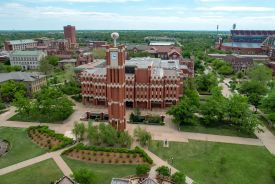A team of scientists from Imperial College London have devised a concept mission to put three humans on the surface of Mars, BBC News reported.
The three astronauts would travel on a two-part craft that would rotate to generate artificial gravity and would need a heat shield to protect against solar flares. The craft would then return to orbit Mars using a pre-sent craft fuelled with ice beneath the planet's surface.
"Every part of this mission scenario has been demonstrated one way or the other, including the in situ propellant production on the surface of Mars," said Imperial professor Tom Pike, who led the design team.
The mission was developed in conjunction with the BBC and is meant to incite further discussion about obstacles that would need to be overcome to realistically put a human on Mars.
"There are big, big jumps between a demonstration at one level and putting together the engineering systems for a mission, but they are engineering challenges," Pike said. "They are not fundamentally about making new discoveries."
The craft would consist of a lander and a cruise vehicle. The quickest travel time to Mars would be nine months and the launch would have to wait until the two planets are in optimal alignment.
In theory, when the craft is on its trajectory towards Mars, the lander part would reach the surface ahead of the cruise vehicle on a tether. When the craft approaches Mars, the lander will detach from the tether and would take the astronauts to the planet. The cruise vehicle would orbit Mars like a satellite during the mission. When the mission is over, the astronauts would board the lander and it would meet the cruise vehicle in orbit and the craft would return to Earth.
The team acknowledged there will be many obstacles including physical and mental health.
"Bones loss [in a weightless environment] is about 1-2% a month and if they're landing they'll be susceptible to fractures if they've got to be exerting themselves," Ryan Robinson, the Imperial team's physiologist, said.
The crew's health would be monitored closely on board, but if anyone were to become ill, they would need to rely on the medical supplies and the skill and knowledge of the crewmembers. Living in close quarters with each other on a long trip could also affect the astronauts' psyche.
"We've obviously got some real issues with a long-term mission in terms of the de-conditioning which goes on in the space environment," Robinson said.
The potential human trip to Mars will certainly be aided by information already provided by NASA's Curiosity rover.
"We've got some great results from the Mars curiosity rover," said Imperial's Martin Archer, who specializes in solar and cosmic radiation. "On its trip to Mars, it measured the radiation from these galactic cosmic rays and it was exposed to quite a lot - about two-thirds of the level that NASA is prepared to risk over the whole of an astronaut's life, just on the way there and back again."
© 2025 University Herald, All rights reserved. Do not reproduce without permission.








